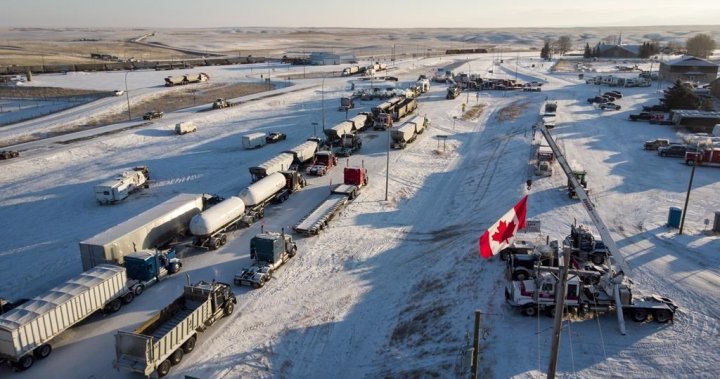Demand for food banks in British Columbia is surging, reflecting a grim national trend.
B.C. food banks report they’re seeing more than 225,000 monthly visits, up 15 per cent over 2023. About one-third of B.C. food bank users are children, who account for more than 70,000 visits, according to the report.
It comes as Food Banks Canada released data Monday showing food banks across the country reported more than two million visits in March, up six per cent from last year and nearly double from 2019.
The figures are no surprise to Hajira Hussain, the executive director of the Richmond Food Bank.
Hussain said demand is up 41 per cent over last year at her food bank, and almost 200 per cent from the start of the COVID-19 pandemic.
She said the surging cost of food and housing has left many working people reliant on the service just to get by.

Get daily National news
Get the day’s top news, political, economic, and current affairs headlines, delivered to your inbox once a day.
“We have lots of families that are working multiple jobs … like an Uber driver, it’s not going to support a family,” she said.
“If you are working minimum-wage jobs, that is just not enough to support a family, to pay rent and to put food on the table.”
It’s a familiar story for Richmond resident Jennifer Kelley, who has been using food banks on and off since she moved to B.C. as a 19-year-old with no support network.
Kelley survives on $1,500 per month in disability benefits, which she said allow her to cover two-thirds of her basic needs.
“I can pay my rent and my bills, but I can’t afford food. So I buy the bare minimum I can. I make everything from scratch,” she said.
“If I didn’t come here I wouldn’t eat well.”
Kelley said she’s seen a growing number and variety of people at the Richmond Food Bank since she started using it about five years ago.
“It’s people from all walks of life,” she said.
“People are coming here with actual jobs. These aren’t just people who are homeless, this is people who are struggling with day-to-day life … normal, everyday people.”
Hussain said the tough economic climate has made things even harder for food banks.
Not only is demand up, but donations are also down as would-be donors struggle with high food prices and their own household budgets.
The cost of the food the food bank buys, like produce and dairy, has also increased.
As a result, Hussain said the organization has been forced to reduce how much food it distributes to each of its clients.
“It is hard,” she said.
“It breaks my heart when families aren’t able to stretch whatever they are able to get here for a whole week.”
Food Banks Canada is making a number of recommendations, including boosting services for immigrants, new government incentives for businesses that pay a living wage, and calling for a national rent assistance program to help people stay afloat amid the surging cost of living.
You can learn more about food banks in B.C. and how to donate here.




